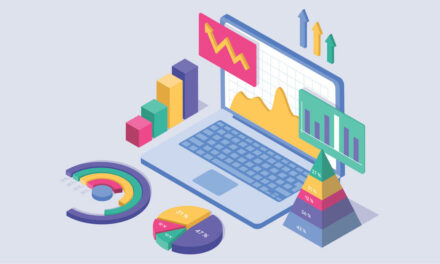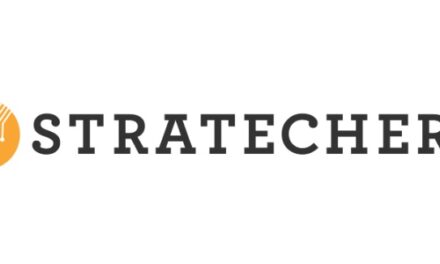With all the recent changes in data regulations and limitations to the exporting of data from walled gardens, advertisers are taking a look at their tech stacks and evaluating how many partners they have and how much it all costs.
Data Management Platforms (DMPs), which in the past were central to a brand’s programmatic advertising strategy, are being reconsidered both for usability and cost. Ad-tech has evolved in the last 10 years and so have DMPs, but needs have evolved as well. Given the big budgets that marketers need to operate their DMPs, brands are now asking — do we even need one?
DMPs used to be seen as an end-all, be-all solution for collecting and activating data for advertising. But today, many Demand Side Platforms (DSPs) are also able to collect data and segment audiences without a DMP. So brands are asking: do I still need a standalone DMP — or any DMP for that matter — and is there enough value added to outweigh the extra costs?
Indeed, brands are assessing the costs and benefits of having a DMP that goes beyond targeted display advertising. A recent survey of U.S. marketing professionals rated “ad inventory discovery” as the number one criteria that drove digital marketer’s DMP selection. Brands are primarily using their DMPs to find targeted audiences by creating custom audience segments that they can then activate through their DSP or other media activation channels. But inventory discovery is not the only factor to consider when shopping for a DMP.
DMPs Have Changed
What used to be just a standalone DMP solution is now almost always paired with other ad-tech components like DSPs, verticals or just white-labeled. The “traditional” DMP — which promised to be the only solution to resolve a marketer’s data challenges — now competes with perceived competitors like customer data platforms (CDPs) and customer relationship management platforms (CRMs).
Today, brands must identify the tipping point: at what point do we keep our standalone DMP, or look for alternatives? When do the costs outweigh the benefits?
Some DMPs cost more than $500,000 to license for managing data sets of up to 50 million users. Just the configuration and monthly costs associated with maintaining a standalone DMP price out many brands from the get-go. And then when ancillary items related to data process management, analysis, and cleansing are factored into the equation…the own versus lease or rent equation starts to become increasingly skewed towards “rent.”
Brass Tacks: What Does The Future Hold For DMPs?
So, are DMPs going away or becoming obsolete? For brands that have already made the investments in DMPs, they probably don’t want to abandon the initiative, especially after expending significant resources to set up the operation, which includes people, processes, and technology. If the sunk costs are already in place, it probably makes sense to stick with the strategy. Some specific considerations to think about include:
- Do you manage multiple online campaigns, across different ad networks, exchanges, and publishers?
- How important is control over data assets, segmentation, leakage, and the monitoring of partner usage?
- Is there potential for realizing a data-centric strategy that extends beyond digital?
- How important is scalability, niche-targeting, and messaging?
In the wake of GDPR, some brands are using data privacy regulation as an excuse to stop using DMPs. However, DMPs can probably help, not hurt, big brands with compliance issues.
The role of a DMP in relation to GDPR is comparable to that of a gatekeeper. Having a DMP makes it possible to access anonymized data from different sources—such as the tags used to track online user behavior, first-party data, ad platform pixels, and third-party audience segments. Indeed, it affords a marketing organization more control over available data, and that can often be a meaningful competitive differentiator.
Options for SMBs and Normal-Sized Ad Budgets
As always, big brands with deep pockets behave one way. But what about everyone else? How does an organization that lacks a sizable budget, operates with a modestly-sized market team, yet also wants to get more reach and targeting make the most DMP technology? For those types of organizations, DMP ownership is probably not an option, but *renting* one through a partner is.
Indeed, the marketplace is at a unique point in its evolution where small and mid-sized organizations are able to engage with DMPs and get access to all of the functionality that the category has to offer, but without having to incur the significant upfront costs that historically characterized the space. With all of the regulatory issues swirling about, engaging with a third party entity to realize all of the benefits of programmatic marketing while incurring little risk, seems like a smart path to follow.
Future of DMPs: Not Going Anywhere Anytime Soon
So, are DMPs going away? Not anytime soon.
For marketers that have already invested resources in DMP-based operations and have the resources to maintain them, keep the foot on the gas pedal. For everyone else using a DSP but considering what to do about DMP adoption—that is to say, the majority of the marketplace, which resides outside of the aggressive, early-adopter set that is the largest 100 advertising companies—the optimal path to a DMP is likely through an outsourcing or partnering model. Think: lease versus buy. This strategy ensures that programmatic data will be realized to its fullest potential, but without all of the costs and rigmarole that’s historically been associated with DMP adoption.
For everyone else, if you are already using a DSP then the preferred path to DMP is probably via a partner, which will be able to address your organization’s data needs related to programmatic campaigns with a big upfront cost. Think lease versus buy. Either way, advertisers should not let their programmatic data go to waste, and an integrated DSP and DMP approach is a way to ensure that doesn’t happen.






